new
实现原理:
- 创建一个空对象
- 创建的对象的__proto__指向构造函数的原型对象
- 执行这个函数,并将创建的对象作为this的上下文
- 如果改函数没有返回对象,则返回this
function myNew(fn,...args) {
const obj = Object.create(null)
obj.__proto__ = obj.prototype
const result = fn.apply(obj, args)
const isObject = typeof result === 'object' && result !== null
const isFunction = typeof result === 'function'
if(isObject || isFunction) return result
return obj
}
测试
function P() {
const args = Array.prototype.slice.call(arguments, 0)
console.log(args)
}
var p = myNew(P, 1,2,3)
var p2 = new p(1,2,3)
结果
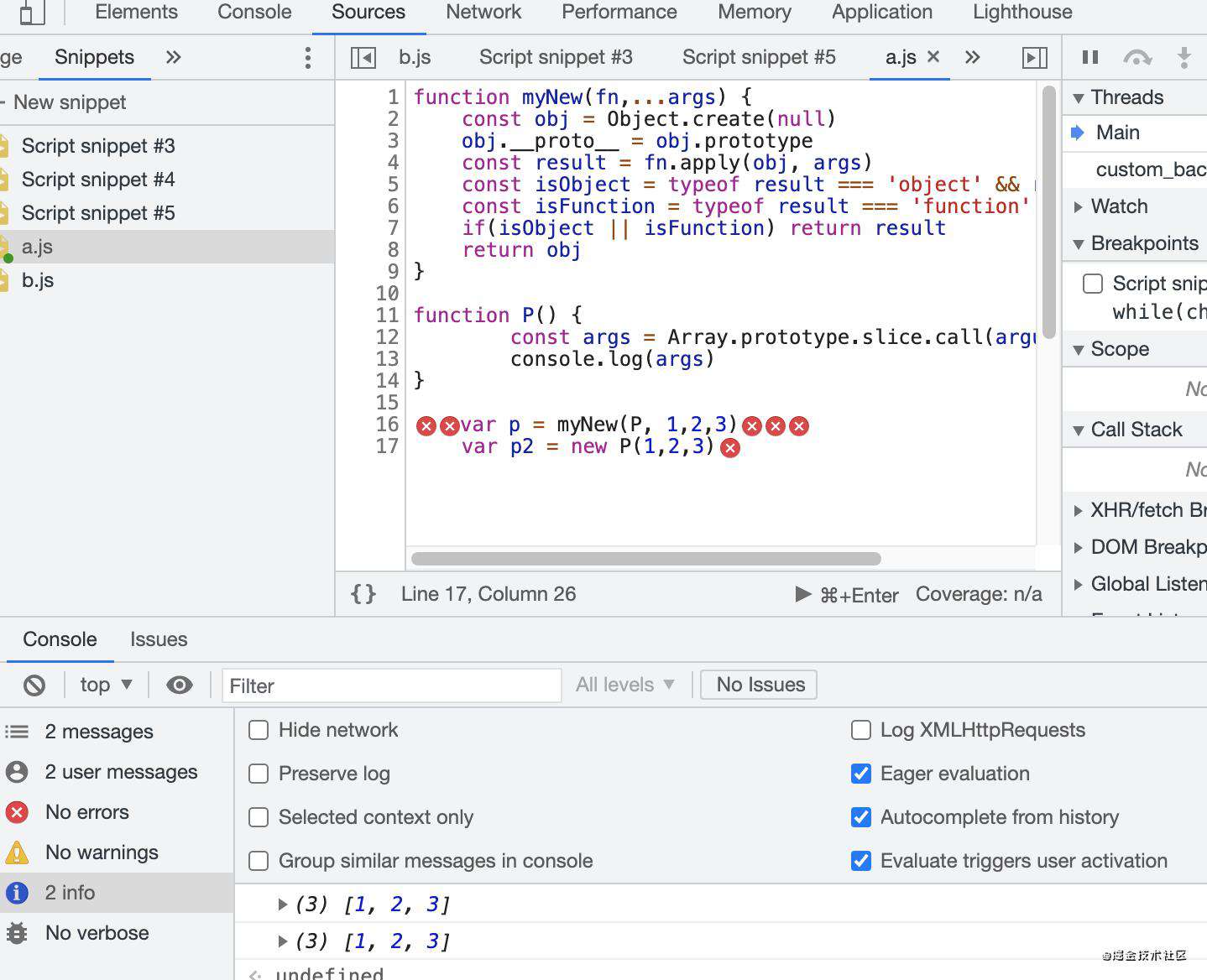
call,apply
call和apply实现思路一样区别就是传入的参数call是展开参数,apply是数组先看实现步骤:
- 改变上下文this的指向
- 执行这个函数
- 并返回运行结果
call
Function.prototype.myCall = function(context,...args) {
if(typeof this!=='function') {
throw new TypeError('not function')
}
context = context || window
context.fn = this
const result = context.fn(...args)
delete context.fn
return result
}
测试
function p(...args) {
console.log(...args,this.a)
}
const obj = {
a: 2
}
p.myCall(obj, 1)
p.call(obj, 1)
结果
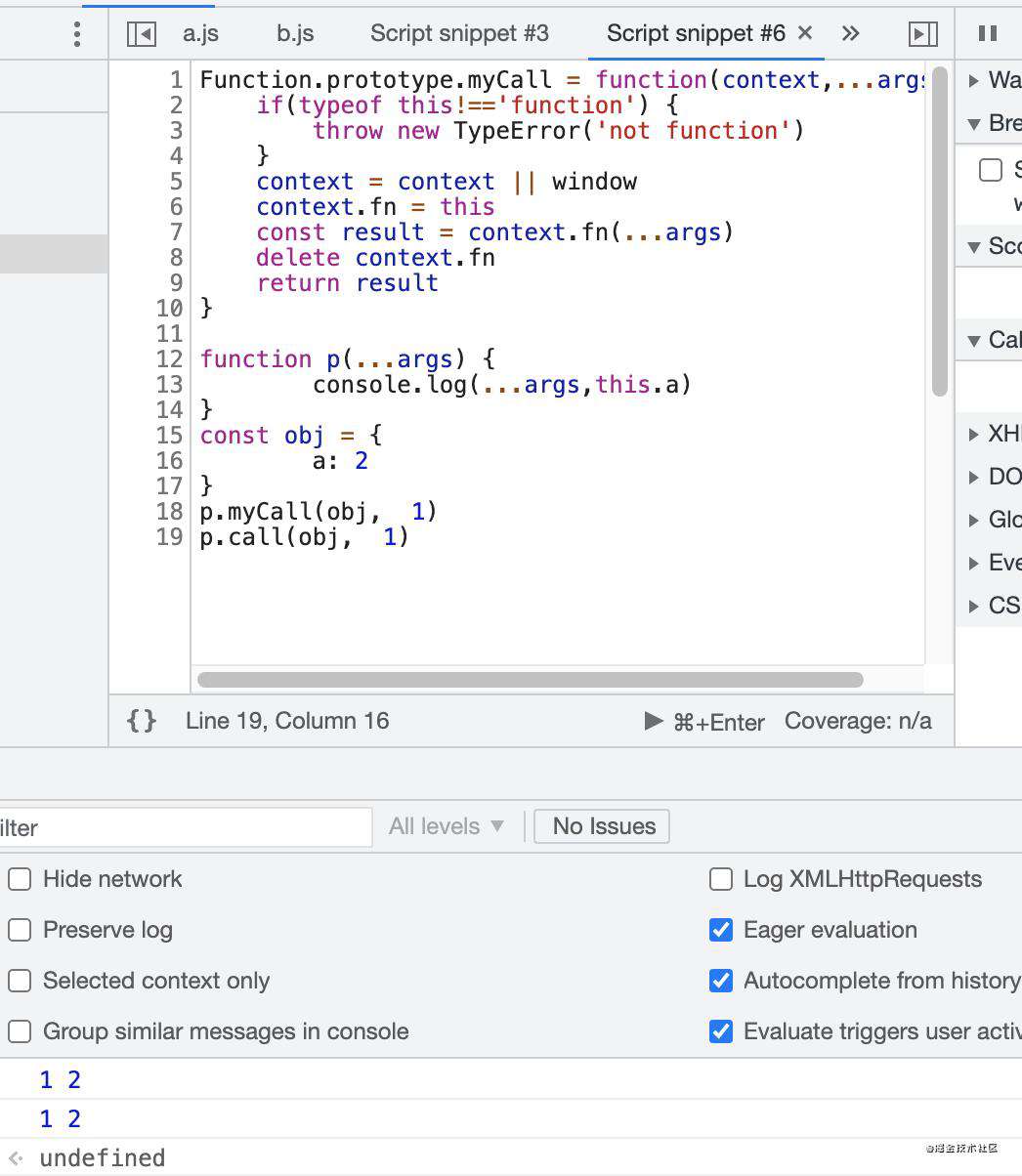
apply
Function.prototype.myApply = function(context,args) {
if(typeof this!=='function') {
throw new TypeError('not function')
}
context = context || window
context.fn = this
const result = context.fn(...args)
delete context.fn
return result
}
测试
function p(...args) {
console.log(...args,this.a)
}
const obj = {
a: 2
}
p.myApply(obj, [1,3])
p.apply(obj, [1,3])
结果
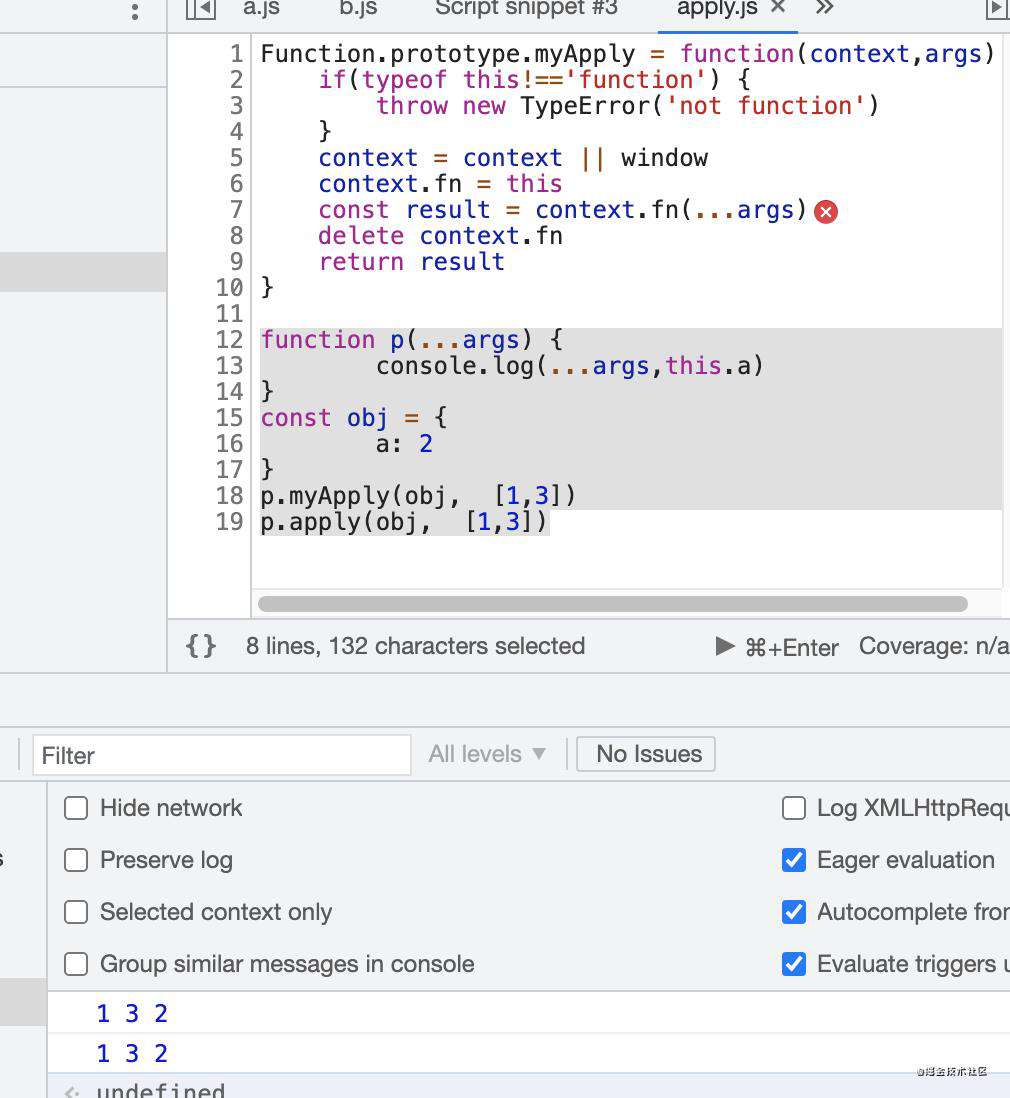
bind
实现原理:创建一个新的函数,在 bind() 被调用时,这个新函数的 this 被指定为 bind() 的第一个参数,而其余参数将作为新函数的参数,供调用时使用。
Function.prototype.myBind = function() {
if (typeof this !== 'function') {
throw new TypeError('not function');
}
var slice = Array.prototype.slice;
var thatFunc = this, // function p
thatArg = arguments[0]; // 获取传入的对象也就是上下文
var args = slice.call(arguments, 1); // 获取传入的参数
return function(){
var funcArgs = args.concat(slice.call(arguments)) // 合并参数
return thatFunc.apply(thatArg, funcArgs); // 使用apply进行调用
};
};
测试
function p() {
console.log(this)
}
const obj = {
a: 1
}
p.bind(obj)()
p.myBind(obj)()
结果
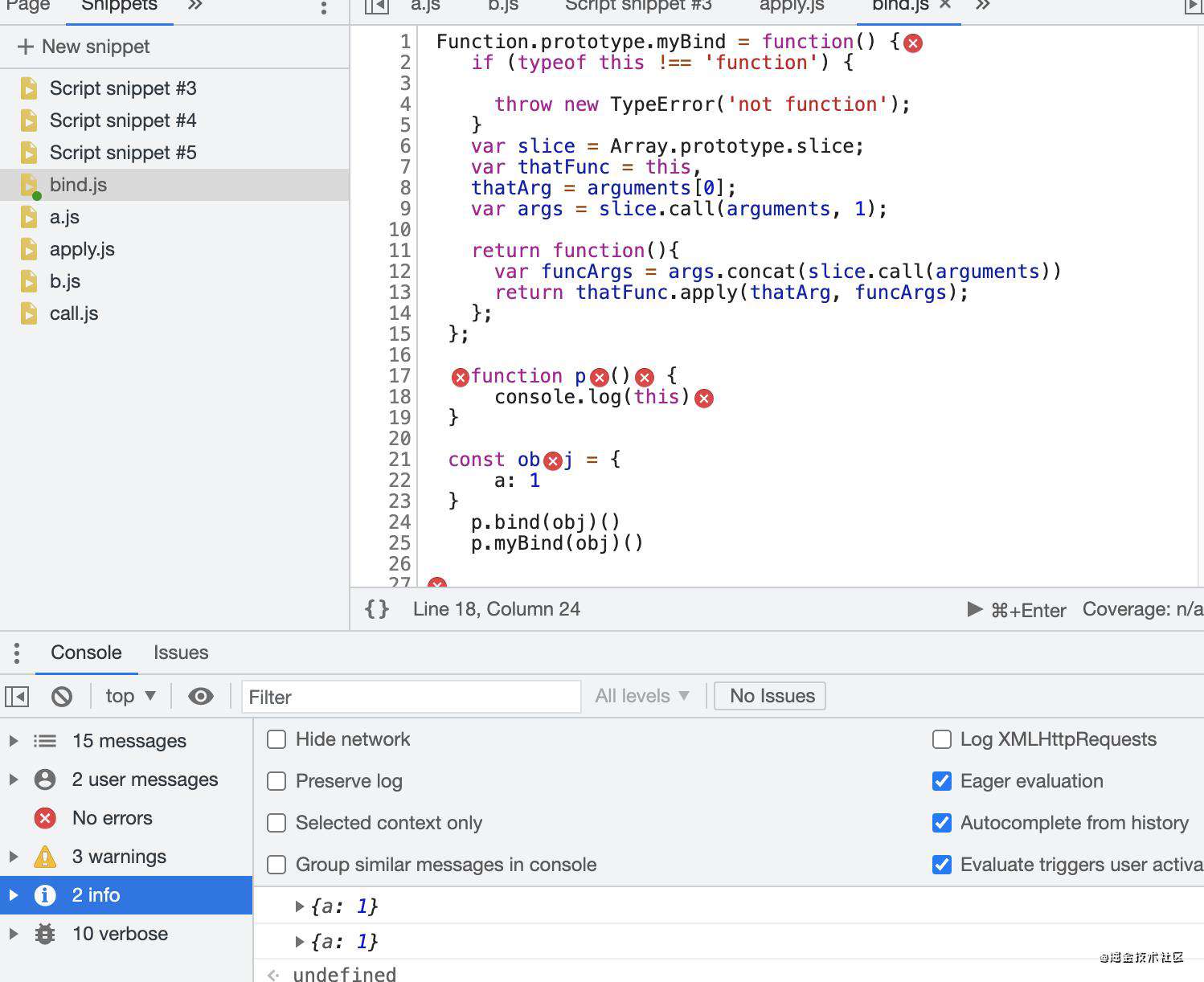
instanceof
原理:判断某个对象是否属于某个类型,或者是该类型的父类型祖先类型。
function myInstanceof(left, right) {
let leftValue = left.__proto__
let rightValue = right.prototype
while(leftValue) {
if(leftValue===rightValue) {
return true
}
leftValue = leftValue.__proto__
}
return false
}
测试
function P() {}
const p = new P()
console.log(p instanceof P)
console.log(myInstanceof(p, P))
结果
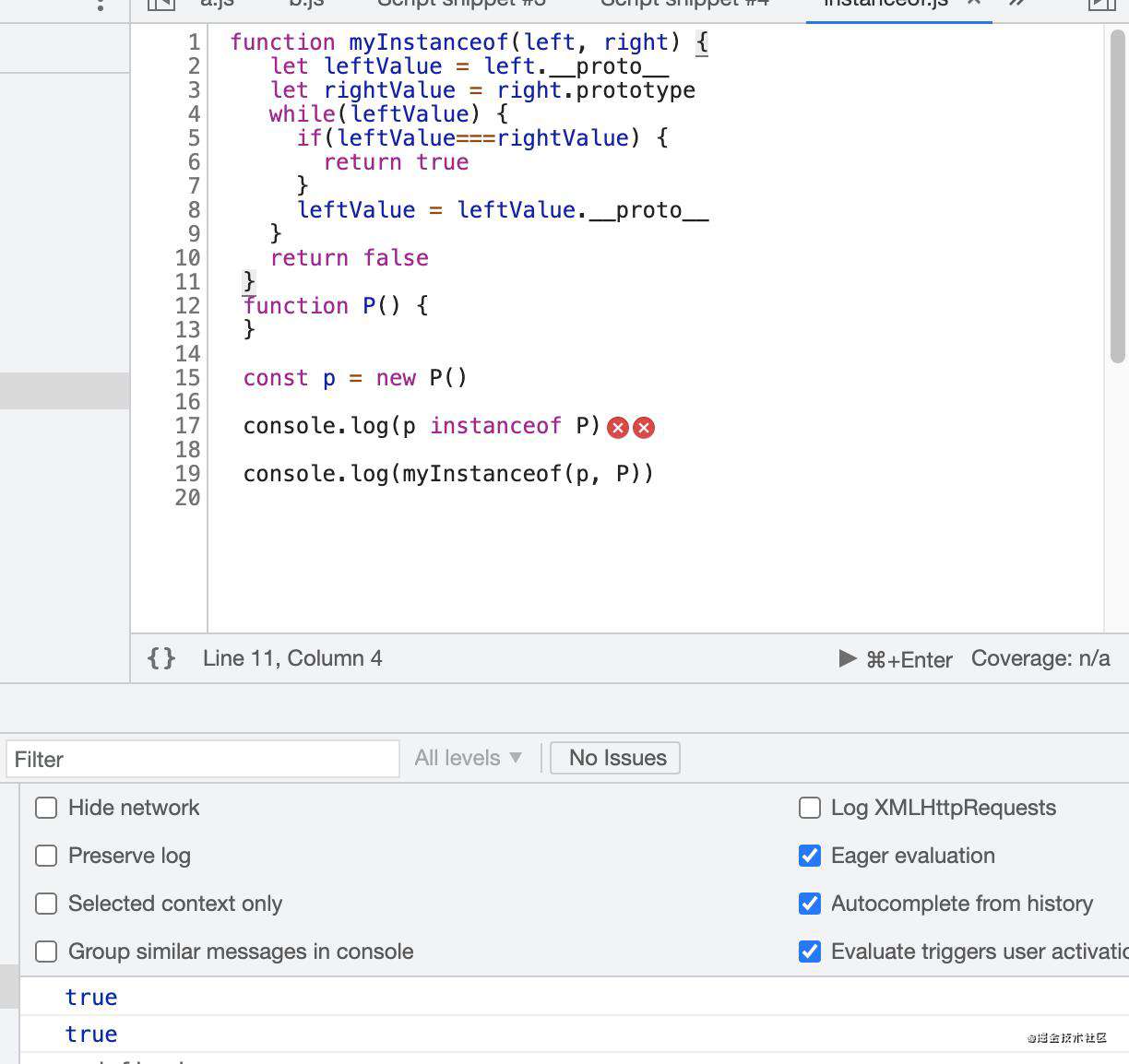
Promise.all
核心思路
- 接收一个Promise实例的数组或者具有Iterator接口的对象作为参数
- 这个方法返回一个新的Promsie对象
- 遍历传入的参数,用Promsie.resolve()将参数进行包裹使其变成一个Promsie对象
- 参数所有回调成功才是成功,返回值数组与参数顺序一致,参数数组只要有一个失败则触发失败状态
function promiseAll(promsies) {
return new Promise((resolve, reject)=> {
if(!Array.isArray(promsies)) {
throw new Error('not Array')
}
let len = promsies.length
let count = 0
let result = []
for(let i=0;i<len;i++) {
Promise.resolve(promsies[i]).then(data=> {
result.push(data)
count++
if(count===len) {
return resolve(result)
}
}).catch(err=> {
return reject(err)
})
}
})
}
测试
const p1 = Promise.resolve(1)
const p2 = Promise.resolve(2)
Promise.all([p1, p2]).then(data=> {
console.log(data)
})
promiseAll([p1, p2]).then(data=> {
console.log(data)
})
结果
resolve态
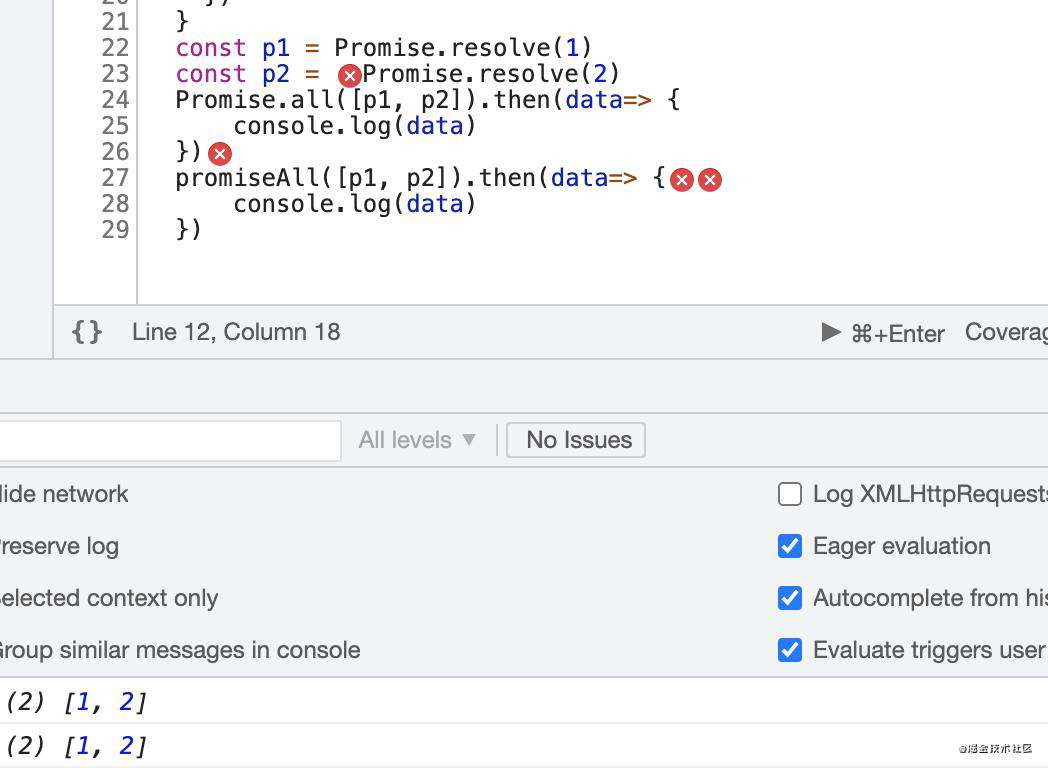 reject态
reject态
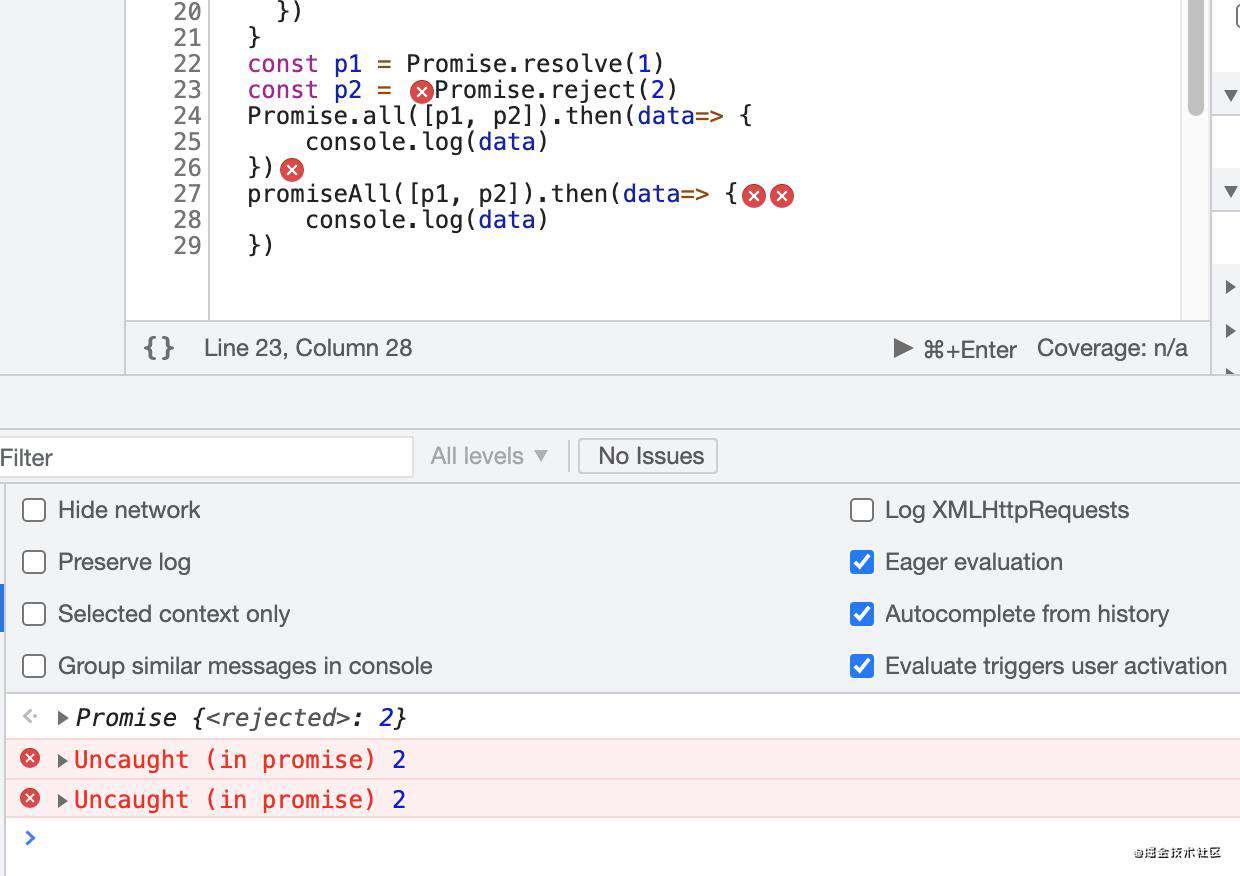
Array.map, Array.filter
map和filter就太简单了
map
Array.prototype.myMap = function(cb, thisArgs) {
let i = 0
let len = this.length
let result = []
while(i<len) {
let cbResult = cb.call(thisArgs, this[i], index, this)
result.push(cbResult)
i++
}
return result
}
测试
let arr = [1,2,3]
let newArr1 = arr.myMap((item)=> {
return item * 2
})
let newArr2 = arr.map((item)=> {
return item * 2
})
console.log(newArr1)
console.log(newArr2)
结果

filter
Array.prototype.myFilter = function(cb, thisArgs) {
let i = 0
let len = this.length
let result = []
while(i<len) {
let cbResult = cb.call(thisArgs, this[i], i, this)
// result.push(cbResult)
cbResult && result.push(this[i])
i++
}
return result
}
测试
let arr = [1,2,3]
let newArr1 = arr.myFilter((item)=> {
return item > 1
})
let newArr2 = arr.filter((item)=> {
return item > 1
})
console.log(newArr1)
console.log(newArr2)
结果

常见问题FAQ
- 免费下载或者VIP会员专享资源能否直接商用?
- 本站所有资源版权均属于原作者所有,这里所提供资源均只能用于参考学习用,请勿直接商用。若由于商用引起版权纠纷,一切责任均由使用者承担。更多说明请参考 VIP介绍。
- 提示下载完但解压或打开不了?
- 找不到素材资源介绍文章里的示例图片?
- 模板不会安装或需要功能定制以及二次开发?




发表评论
还没有评论,快来抢沙发吧!